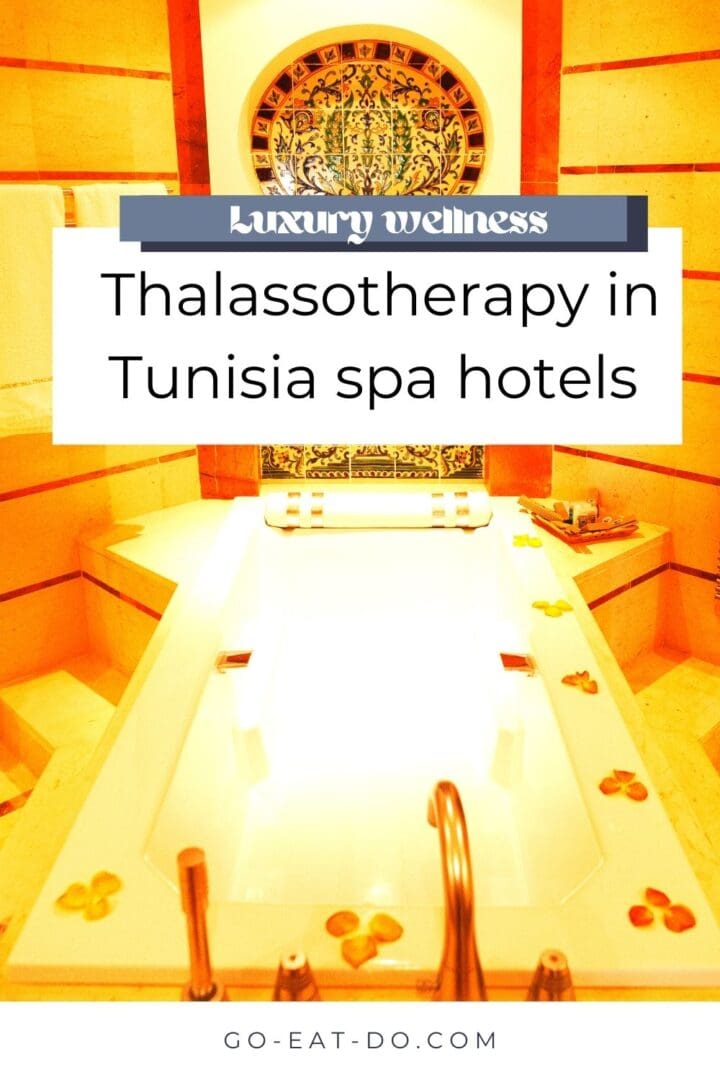Stuart Forster looks at thalassotherapy in Tunisia spa hotels, a water-based spa treatment with French origins.
Tunisia has a long-established culture of bathing. The Roman-era Memmian Baths are in the north of the country at Bulla Regia. The steam rooms of the country’s hammams have long been part of everyday life. By contrast, the popularity of thalassotherapy centres is a relatively recent development.

Tunisia spas
Tunis, Hammanet and Djerba all have state-of-the-art spa centres. The country’s luxury spas draw international visitors by offering high-quality treatments at prices significantly lower than comparable centres in Europe. With around 50 thalassotherapy centres, Tunisia is regarded among the world’s top destinations for that particular genre of spa and wellness treatments.
Thalassotherapy is experiencing a wave of sustained popular recognition. It doesn’t seem to be just another of those chic trends that come and go in the faddish, ever-changing world of wellness treatments.
Yet thalassotherapy is by no means new. Its origins can be traced to France in the second half of the nineteenth century.
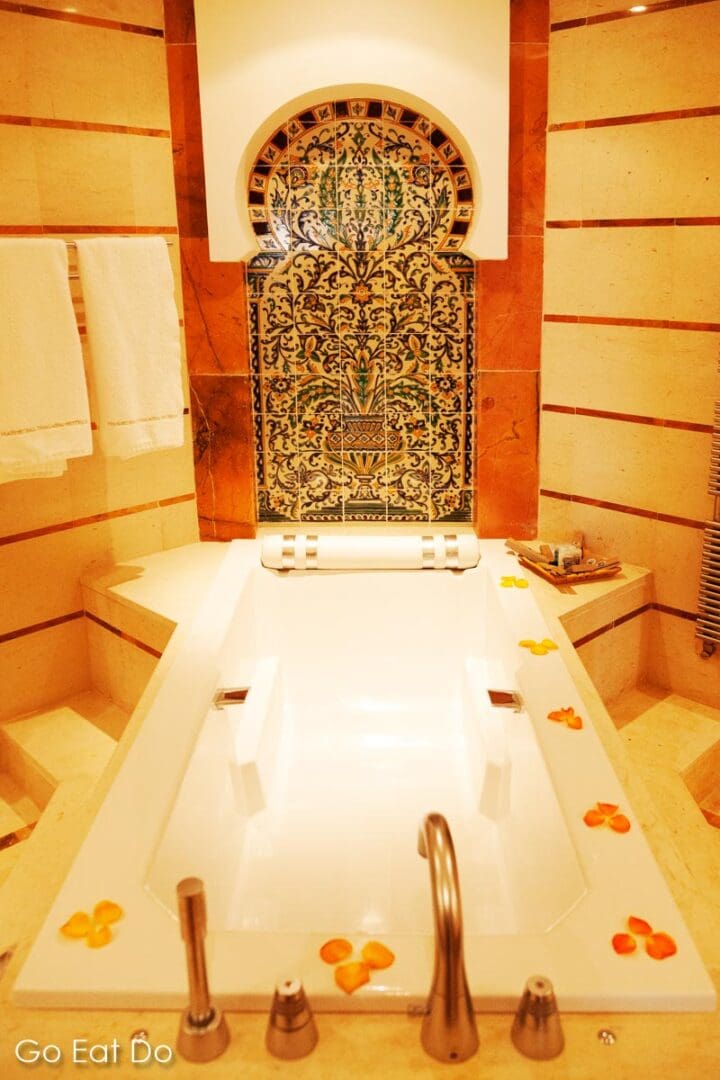
Origins of thalassotherapy
The first recorded use of the word ‘thalassotherapy’ was during the 1860s when Dr de la Bonnardiére coined the term. It describes the use of seawater during treatments with medical purposes. In case you’re wondering, it is the concatenation of two ancient Greek words; thalasso meaning ‘sea’ and therapeia meaning ‘care’.
Given its geography, perhaps it’s unsurprising that Tunisia has become a global leader in thalassotherapy? The country has 800 miles of coastline, of which 700 miles are beaches, and a sun-blessed Mediterranean climate.
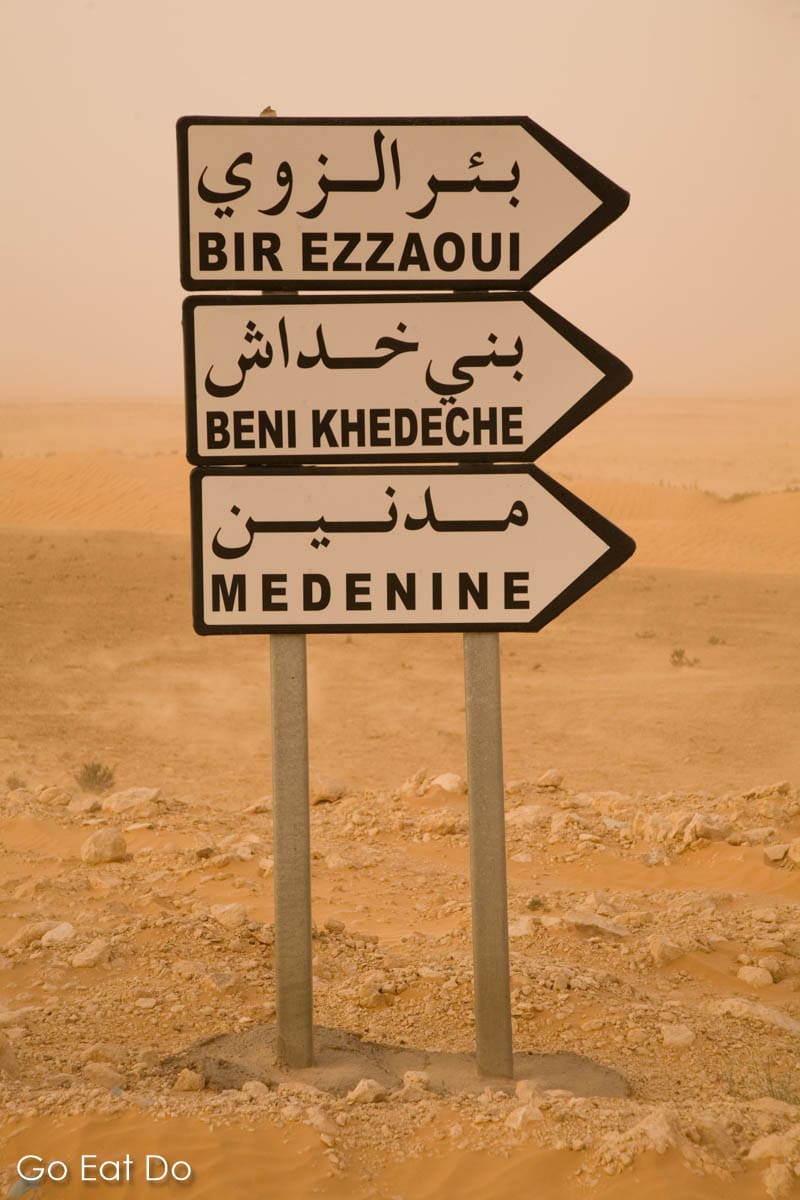
France is the only country which can claim more thalassotherapy centres than Tunisia. One of those is the Institut Marin de Rockroum, at Roscoff in Brittany. It is recognised as the world’s very first thalassotherapy centre. It was opened in 1899 by Dr Louis Bagot, who advocated the use of water-based treatments for a range of ailments.
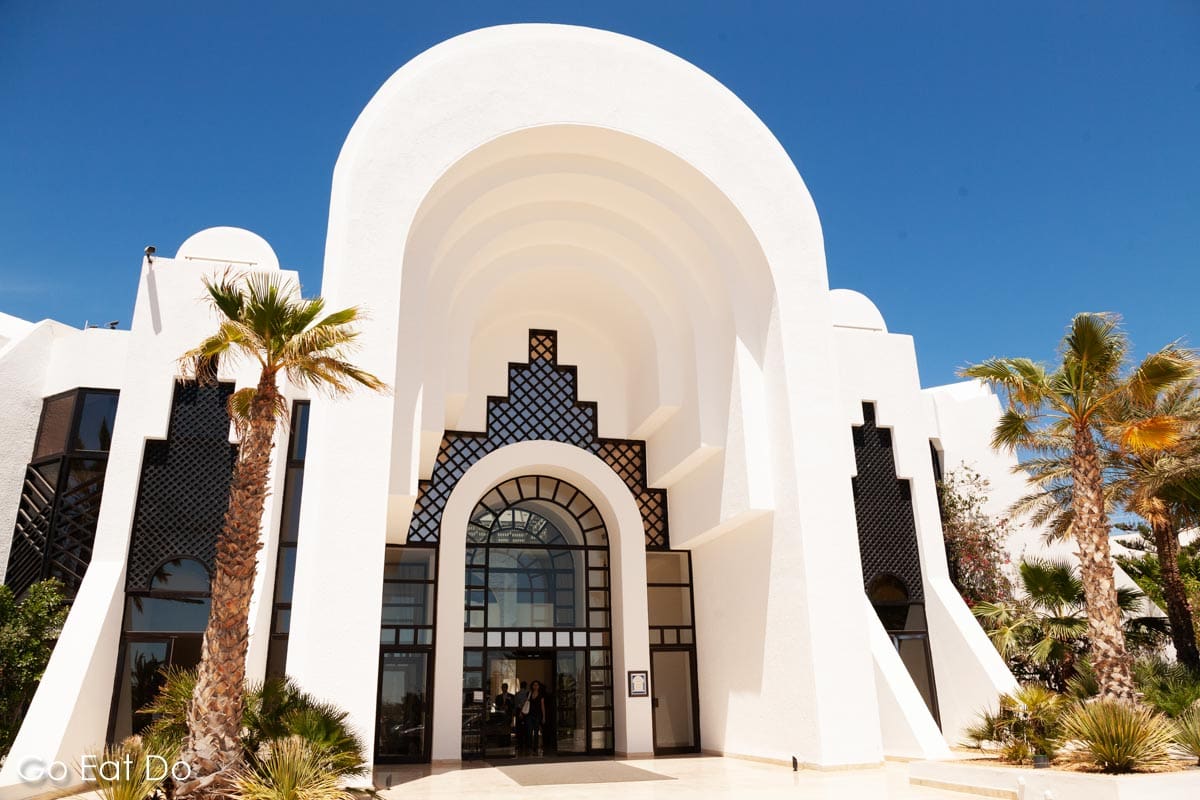
Benefits of thalassotherapy
Over the years it has been claimed that thalassotherapy can treat back problems, joint trouble and muscle pains. It’s been utilised to help people recuperate from injuries. Assertions have also been made that it can help alleviate stress and treat conditions including eczema, psoriasis and arthritis.
Almost inevitably, such claims have been greeted sceptically by some members of the medical profession. Questions have been raised about the efficacy of alternative therapies in treating chronic ailments. Yet there are patients who swear by the success of their thalassotherapy treatment.
Thalassotherapy treatment
Many more people enjoy thalassotherapy simply for being sensual and relaxing. It’s a form of treatment that brings about a sense of well-being.
Early French thalassotherapy centres evolved from the tradition of spa treatments and seaside bathing that became popular in Europe during the late-nineteenth century. The use of seawater in spas was given a further boost when a scientific argument was provided in its favour just over a hundred years ago.
Rene Quinton and thalassotherapy
The scientist Rene Quinton, also a Frenchman, discovered that mammalian blood plasma shares a number of characteristics with sea water. Quinton summarised his findings in his book L’eau de mer, mileau organique (which translates as ‘Sea Water: Organic Medium,), published in 1904. His concept is central to thalassotherapy treatments. Quinton argued that, when heated to body temperature, seawater helps accelerate the absorption of mineral ions into the bloodstream and aids the transport of toxins out of the body.
This was one of the factors which helped popularise prolonged treatments in European spa towns. They became a means of de-stressing, losing weight and recovering from injuries.
Interestingly, a number of people who once took spa treatments in Europe now travel to Tunisia to do so. A sizable number head to the country from Germany, Switzerland and France; countries in which the tradition of taking spa holidays is long-established.
Tunisia hammam heritage
Tunisians can, of course, add that bathing is also an integral part of their nation’s cultural heritage. For Tunisian men, a Friday evening visit to the hammam, the public steam bath, is a social tradition. The hammam acts as a social meeting place as well as a location where people wash, relax in the heat and receive massages.
Hammams can be found throughout the country and usually consist of a series of rooms at varying temperatures.
Bathers are expected to wear a cloth wrap known as a fouta around their waist.
Many visitors to Tunisia find that a traditional hammam visit is a memorable experience and very affordable, even if travelling on a tight budget. It’s common for people to stay in the heat of the steam room for as long as they are comfortable.
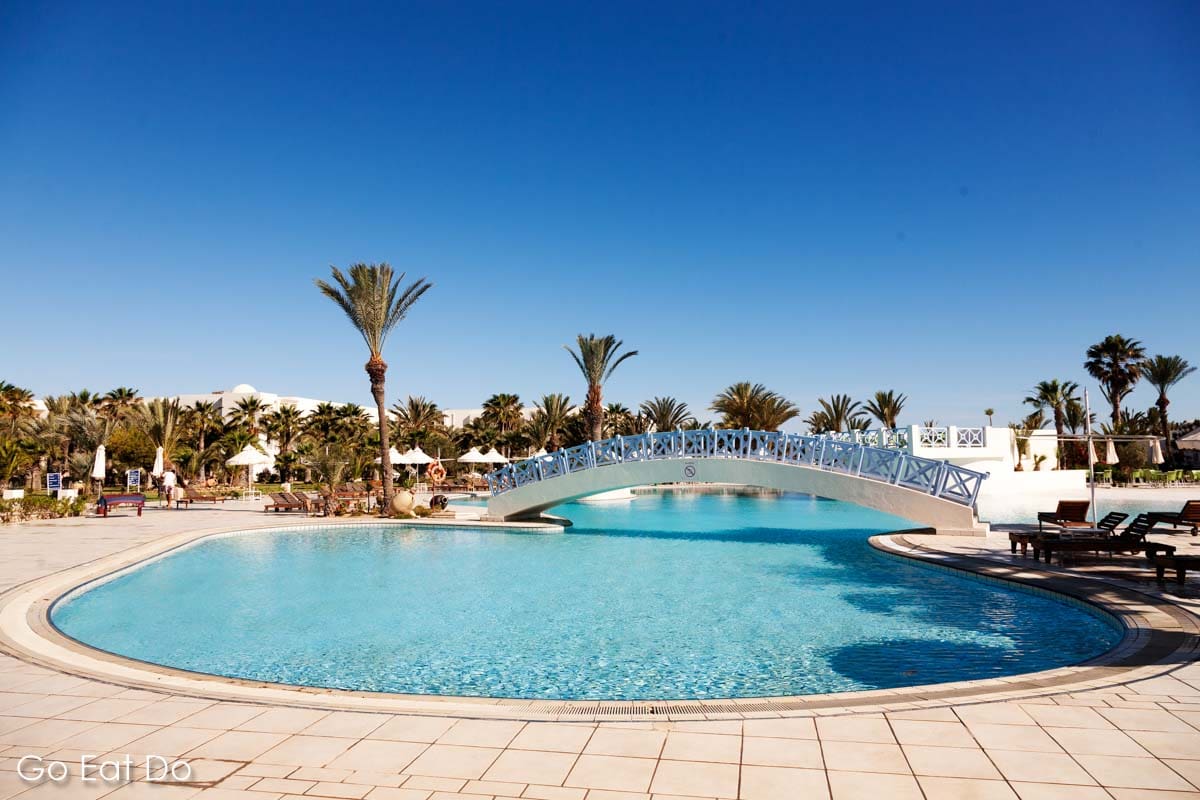
Spa architecture
The architecture of traditional hammams has inevitably influenced the design of some of Tunisia’s leading spa centres.
A fleeting look at the pastel colours within the pillared and arched hall of the Thermes Marins de Carthage at the Residence Hotel is sufficient to evoke thoughts of the country’s traditional steam baths.
Yet modern spa centres are equipped with technology that the traditional hammams do not have, including underwater jets within heated pools. The jets apply pressure to the body, comparable to having a massage. That helps the muscles pummelled by the water to relax and, more generally, to reduce stress.
It is possible to visit one of Tunisia’s thalassotherapy centres and to take a one-off treatment lasting about an hour or a half-day. Yet many people find the greatest benefit comes from taking a series of treatments over the course of several days. Such courses start with a consultation. A doctor assesses the condition of the person checking in to take the thalassotherapy and recommends suitable treatments.
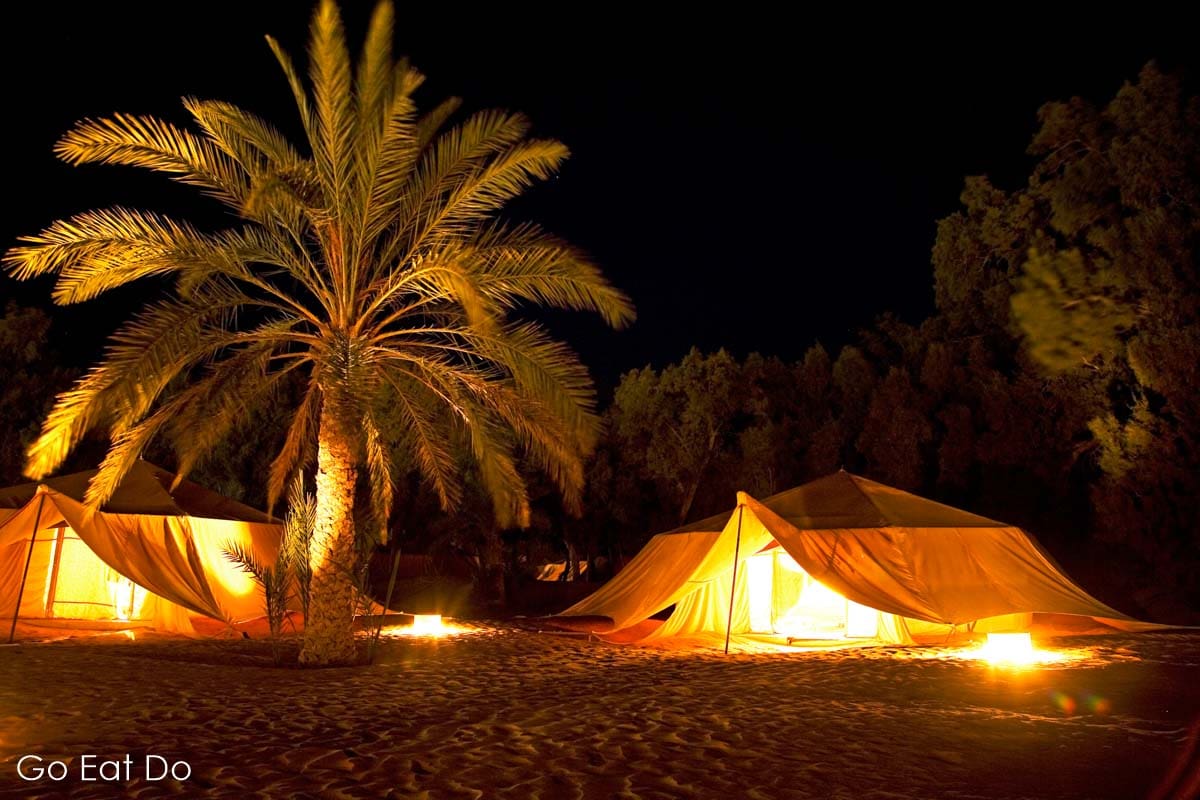
Detoxing and massages
These might include massages, algae or seaweed wraps, which are recommended to stimulate the body’s metabolism while aiding detoxification and deep cleansing of the skin). Applications of ghassoul, a mineral-rich clay which leaves skin feeling soft while also helping the body to detoxify, and even aqua aerobic sessions are also options during thalassotherapy in Tunisia. It’s common for the sessions to be held over four or so hours on consecutive mornings.
“The entire experience is relaxing but later you feel tired. It can take quite a bit out of you. That’s why it can be helpful for weight loss,” says Ffion Davies, who has travelled to Tunisia a number of times.
It is a misnomer to think that thalassotherapy therapies appeal only to women. Men might play down the idea that they enjoy being pampered but statistics do not lie; roughly 40 per cent of the guests visiting spa centres in Tunisia are male.
That’s something to ponder the next time you’re relaxing during a treatment.
Map of thalasso spas and hotels in Tunisia
The map below shows some of the best spa hotels in Tunisia:
Map showing spa hotels in Tunisia offering thalassotherapy treatments.
Travel to Tunisia
I flew to Tunisia from London’s Gatwick Airport with Tunisair.
View the UK Government website to see official Foreign, Commonwealth and Development Office advice about travel to Tunisia.
Hotels in Tunisia
I experienced thalassotherapy treatments while staying at the Yadis Djerba Golf Thalasso and Spa Hotel.
Search for accommodation in Tunisia via the Booking.com website:
Books about Tunisia
You may enjoy the following books about Tunisia:
Tunisia Travel Guide by Mike Gerrard:


Further Information
The Tunisia website has travel and tourism information for visitors to the country.
Thanks for visiting Go Eat Do and reading this post about thalassotherapy in Tunisia spa hotels. Thinking of taking a wellness holiday? You may enjoy this post about Bangkok spas for luxury wellness in Thailand
Stuart Forster is an award-winning travel writer based in northeast England. He enjoys wellness treatments and saunas. Check out this post about going naked at a sauna in Germany.
If you enjoyed this post on Thalassotherapy in Tunisia why not sign up for the free Go Eat Do newsletter? It’s a hassle-free way of getting links to posts on a monthly basis.
‘Like’ the Go Eat Do Facebook page to see more photos and content.
A version of this post was first published on Go Eat Do on 30 March 2013.
